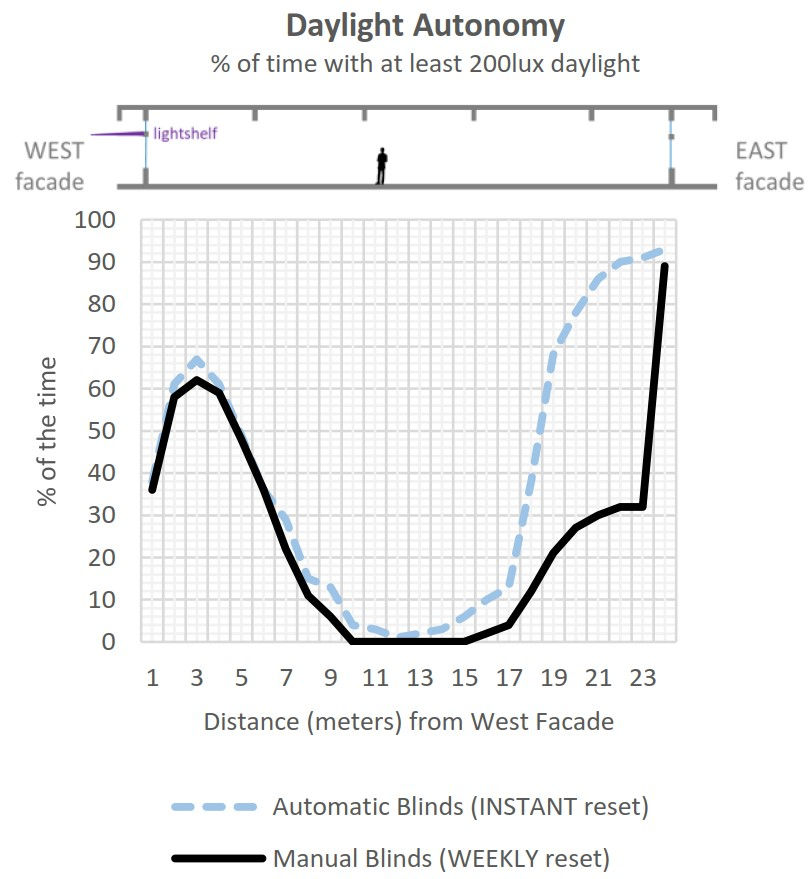Daylight Autonomy: Lightshelf versus Manual/Automated Blinds
- Gregers Reimann

- Feb 2, 2021
- 2 min read
Updated: Apr 27, 2021
Written by: Gregers Reimann
Simulations by: Bjorn Bull Hansen
A comprehensive daylight simulation study was undertaken for two different façades in tropical Singapore to assess the annual indoor daylight autonomy. While both façade have an external horizontal overhang, the West façade was also designed with a 2.5 meter deep lightshelf that doubles up as an effective shade to protect against low-angle sun. For the East façade, the glare control is provided by roller blinds. Two different operational modes of the roller blinds were analyzed, namely manual control and automatic control.

Image 1: Vertical section of open plan teaching space spanning 24 meters from the West to East facing façades. The annual hourly frequency of engaging the blinds is shown for automated blinds (top raph) and manual blinds (bottom graph). The coloured graphs on the right show the annual daylight autonomy of how often 200lux or more of daylight occurs in the room.
The automatically blinds are controlled as prescribed in the IES LM-83-12 guideline used by the LEED and WELL standards. The threshold of activating the blind is when 2% of the work plane area is exposed to 1000 lux or more of direct sunlight between 8:00 – 18:00. When exceeding the threshold, the blind is engaged, otherwise it remains retracted. For automated blinds the adjustment is instant. For manually adjusted blinds, the frequency of adjustment depends entirely on the users. The following three manual blinds retraction modes were simulated: Daily (blind is retracted every night), weekly (blind is retracted after 1 week) and monthly (blind is retracted after 1 month). For daily, weekly and monthly adjusted blinds, they are engaged 21%, 66% and 93% of the time, respectively, refer to Image 2.

Image 2: Percentage of time the blinds are up or down
Interestingly, the simulations show a very different effect on the daylight autonomy of the West and East facades. The deep lightshelves shade the West facade so effectively that the blinds do not have to be engaged. Therefore, the daylight autonomy remains unchanged along the West façade regardless of the blinds control. For the East façade, however, a significant drop in the daylight autonomy occurs once the blinds control switch from automatic to manual. The simulations show that manually blinds controlled weekly result in a lower daylight autonomy than for the façade with the lightshelf, refer to Image 3.

Image 3: The annual daylight autonomy across the room
A word of caution on using the IES LM-83-12 blind control criterion in the tropics, where the diffuse sky is a major source of glare. In the tropics, users will typically engage blinds both to shield against direct sunlight entry as well as from views to the glary bright white diffuse tropical sky. As such, the simulated daylight autonomy for automated blinds shown in the graphs (Image 2 and 3) is arguably unrealistically high for the tropics.




Comments